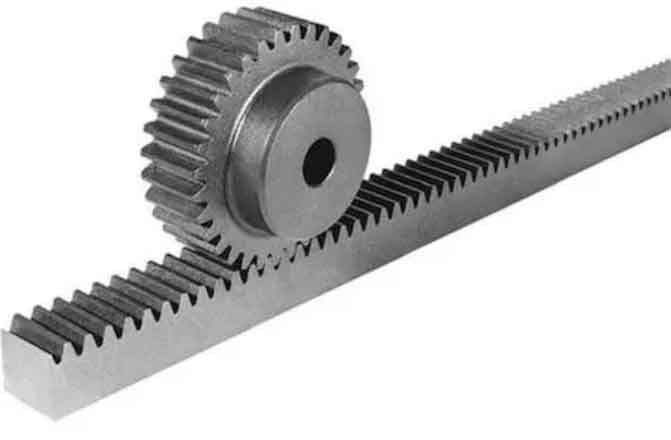
Rack and pinion gears play a crucial role in robotics, enabling precise and efficient motion control in various robotic systems. Their unique design and advantages make them ideal for achieving accurate linear motion and positioning in robotic applications. Let’s explore how rack and pinion gears enhance precision and efficiency in robotics:
1. Precise Motion Control:
Rack and pinion gears provide precise linear motion control in robotics. By converting the rotational motion of a motor or actuator into linear motion, rack and pinion gears enable accurate positioning of robot arms, grippers, or other components. The direct engagement between the rack and pinion ensures minimal backlash and precise movement, allowing robots to perform intricate tasks with high precision.
2. Efficient Power Transmission:
Rack and pinion gears offer efficient power transmission in robotics. The direct tooth engagement and minimal energy loss result in efficient power transfer from the motor or actuator to the rack, enabling smooth and controlled linear motion. This efficiency is crucial for optimizing robot performance and conserving energy.
3. High Load Capacity:
Rack and pinion gears have a high load-carrying capacity, allowing robots to handle substantial loads with precision. The design of the gear teeth and the materials used ensure robustness and durability, enabling the gears to withstand the forces exerted during robot operation. This high load capacity contributes to the versatility of rack and pinion gears in various robotic applications.
4. Rapid Acceleration and Deceleration:
Rack and pinion gears facilitate rapid acceleration and deceleration in robotics, enabling fast and dynamic motion. The direct nature of the gear engagement allows for quick changes in direction and velocity, making them suitable for applications that require rapid movements, such as pick-and-place operations or high-speed assembly processes.
5. Compact Design:
Rack and pinion gears offer a compact design, making them suitable for robotic systems with limited space. Their slim profile and ability to achieve high gear ratios in a small footprint allow for efficient utilization of space within the robot’s structure. This compactness contributes to overall system efficiency and facilitates the integration of rack and pinion gears into various robot designs.
6. Smooth and Quiet Operation:
Rack and pinion gears provide smooth and quiet operation due to their direct tooth engagement and minimal backlash. The absence of sliding or rolling elements reduces friction and vibration, resulting in smooth linear motion and quieter operation. This is particularly advantageous in applications that require precision and low noise levels, such as laboratory automation or medical robotics.
7. Integration with Feedback Systems:
Rack and pinion gears can be easily integrated with feedback systems, such as encoders or linear position sensors, to provide closed-loop control and accurate position feedback. This integration allows for precise positioning and closed-loop control of the robot’s linear motion, enhancing overall performance and repeatability.
By leveraging the precision and efficiency of rack and pinion gears, robotics engineers can achieve accurate and controlled linear motion in robotic systems. Whether in industrial automation, collaborative robotics, or other applications, rack and pinion gears enhance precision, efficiency, and reliability, enabling robots to perform tasks with high accuracy and productivity.
